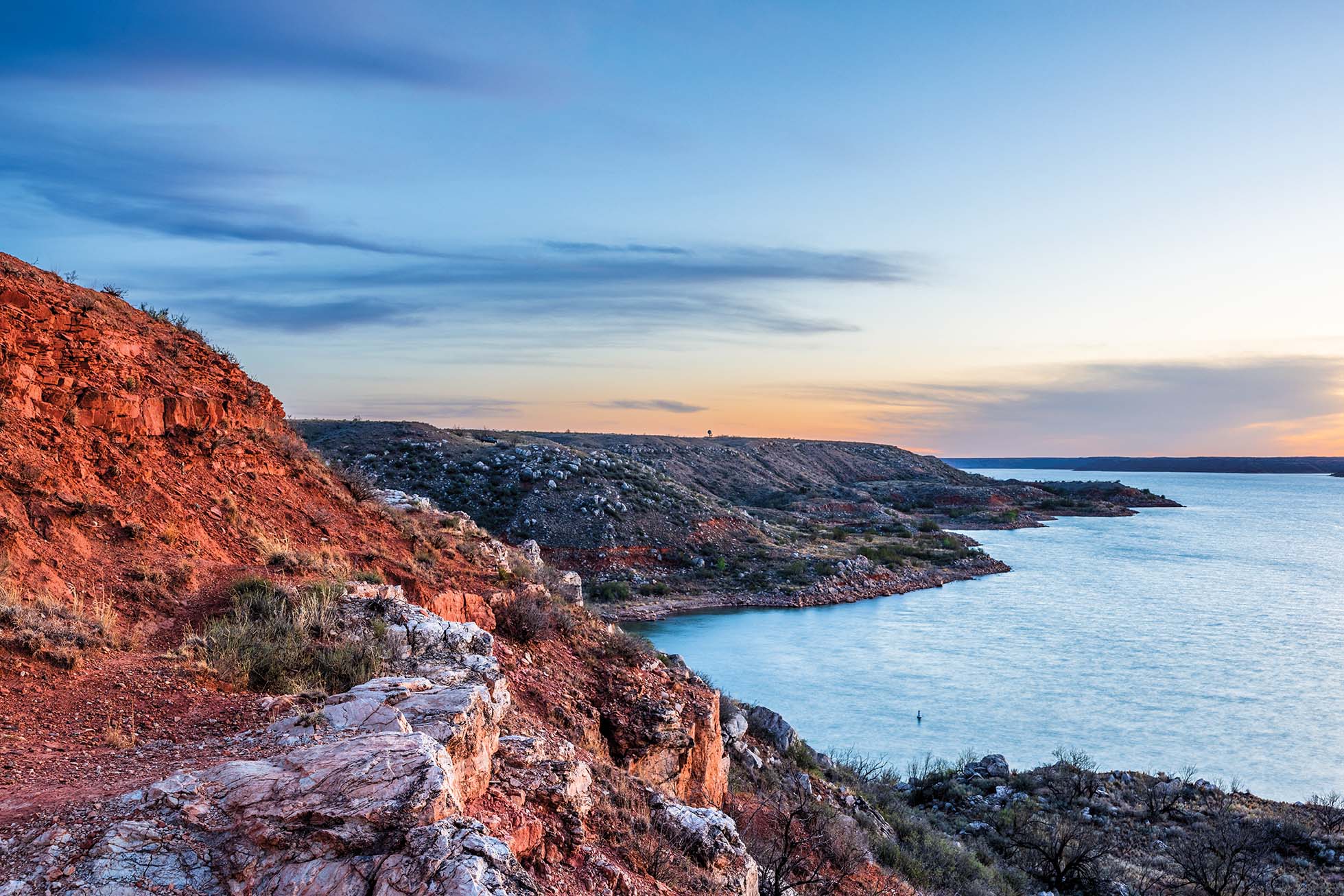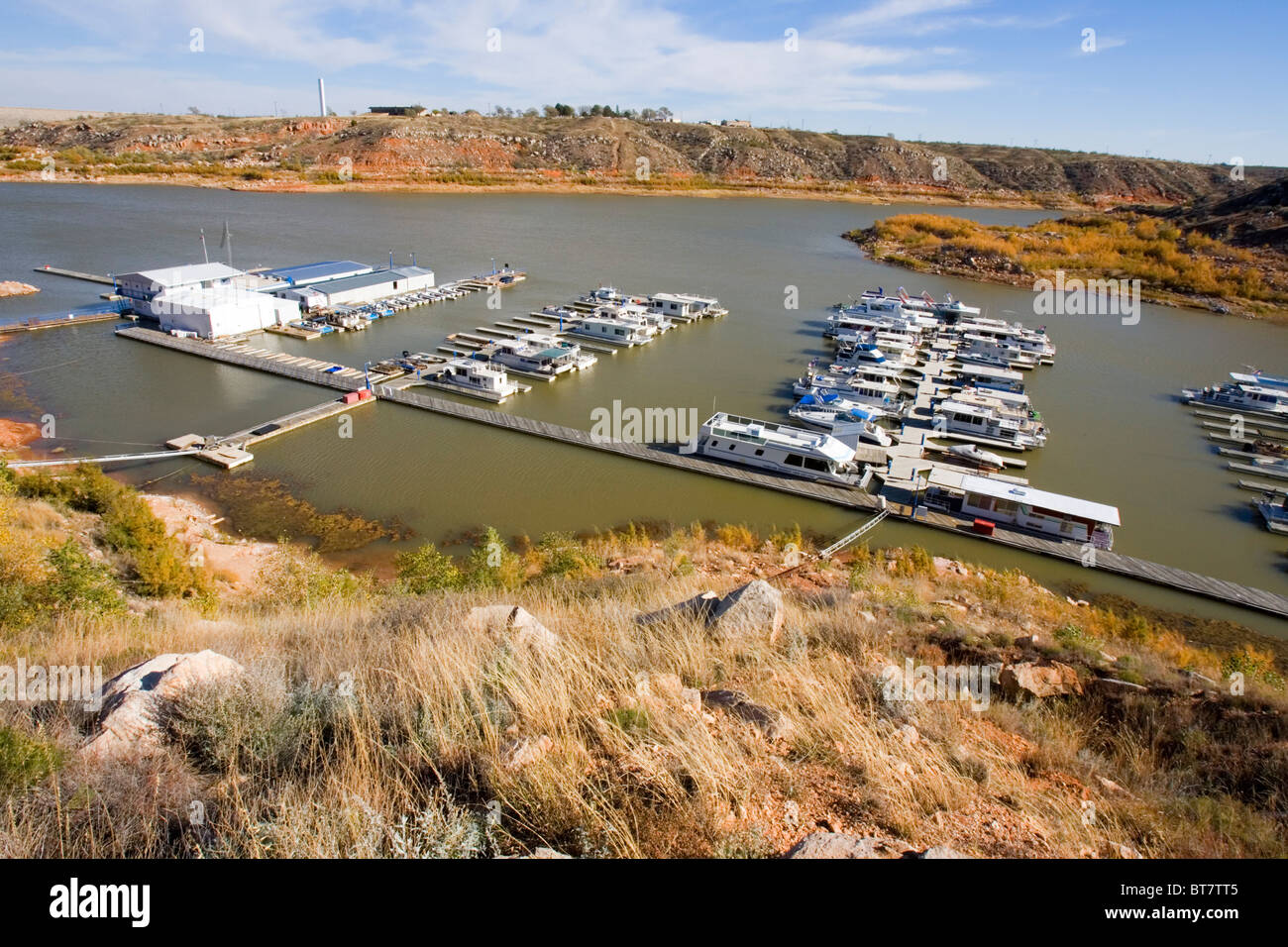
Lake Meredith: A Panhandle Oasis, Lifeline, and Living Legacy
In the vast, often unforgiving expanse of the Texas Panhandle, where the land stretches flat beneath an immense sky and the wind whispers tales of dust and resilience, lies a surprising jewel: Lake Meredith. More than just a body of water, this man-made reservoir, nestled within the rugged canyons of the Canadian River valley, is a critical lifeline for millions, a cherished recreational haven, and a silent witness to millennia of human history.
For residents of Amarillo, Lubbock, Borger, and a dozen other communities across the High Plains, Lake Meredith is quite literally the wellspring of life. Its creation in the 1960s, a monumental engineering feat, transformed a segment of the Canadian River into a vital source of drinking water for an arid region. Before its construction, the burgeoning populations of the Panhandle relied heavily on increasingly strained groundwater resources. The Sanford Dam, completed in 1965, was a visionary project, harnessing the river’s flow to create a reservoir stretching over 10,000 surface acres at conservation pool, providing a reliable, long-term water supply managed by the Canadian River Municipal Water Authority (CRMWA).
“Lake Meredith represents an incredible triumph of human ingenuity over environmental challenge,” explains John Smith, a water resource engineer with the CRMWA (a hypothetical quote for illustrative purposes). “It’s the backbone of our regional water infrastructure, allowing our communities to thrive where they otherwise couldn’t.”

But Lake Meredith is far more than just a utility. It is an unexpected oasis, offering a dramatic contrast to the surrounding prairie. The lake’s sparkling blue waters are framed by dramatic red-rock canyons, carved over eons by the Canadian River. These rugged bluffs and mesquite-studded hills provide a stark, beautiful backdrop for a diverse array of outdoor activities, drawing visitors from across Texas and beyond.
A Tapestry of Time: Alibates and Ancient Echoes
The land surrounding Lake Meredith carries a profound historical weight, extending far beyond the dam’s construction. This area is home to the Alibates Flint Quarries National Monument, a site of immense archaeological significance. For over 13,000 years, prehistoric peoples journeyed to these quarries to extract a unique, vibrantly colored agatized dolomite, commonly known as Alibates flint. This exceptionally hard and durable stone was prized for crafting tools, weapons, and ceremonial objects, and its distinctive patterns can be found in archaeological sites stretching from the Rocky Mountains to the Mississippi River.
"Standing at Alibates, you’re not just looking at rocks; you’re touching history," says Dr. Elena Rodriguez, a local historian and archaeologist (a hypothetical quote). "It’s a tangible link to thousands of generations of human ingenuity, trade, and survival. The sheer scale of the quarrying operation, done by hand with primitive tools, is awe-inspiring. It tells us that this region, often perceived as remote, was once a bustling hub of commerce and culture."
The Canadian River itself, which feeds Lake Meredith, has always been a natural corridor, attracting early Native American groups, Spanish explorers, and later, American pioneers and cattle drivers pushing westward. The landscape is dotted with remnants of these eras, from ancient campsites to the faint traces of historic trails, adding layers of rich human narrative to the natural beauty of the lake.
Recreation: A Haven for the Outdoors
Today, the recreational appeal of Lake Meredith is undeniable. It’s a magnet for anglers, boaters, campers, hikers, and hunters seeking solace and adventure in the heart of the Panhandle.
- Fishing: The lake boasts a healthy population of game fish, including walleye, smallmouth bass, largemouth bass, crappie, and channel catfish. Anglers flock to its waters, particularly in the cooler months, hoping to land a trophy catch. The walleye, in particular, has developed a strong following, with its challenging fight and delicious fillets.
- Boating: From powerboats slicing across the open water to sailboats gliding gracefully with the wind, the lake offers ample space for all types of watercraft. Marinas and boat ramps provide easy access, and the vastness of the lake ensures that even on busy days, there’s room for everyone.
- Camping: Multiple campgrounds, ranging from developed sites with amenities to primitive, secluded spots, invite visitors to spend nights under the famously star-studded Panhandle sky. The quiet of the canyons, punctuated by the sounds of crickets and the rustle of wind, creates an unforgettable camping experience.
- Hiking and Biking: A network of trails winds through the canyons and along the shoreline, offering breathtaking vistas and opportunities to explore the unique flora and fauna of the region. Hikers can discover hidden coves, observe diverse birdlife, and perhaps even spot deer, bobcats, or coyotes. The dramatic topography, with its sudden drops and rises, provides a challenging and rewarding experience.
- Hunting: While direct hunting on the lake is restricted, the surrounding National Grasslands and private lands offer opportunities for hunting deer, turkey, quail, and other game, contributing to the region’s outdoor economy.

The Peril and the Promise: Drought and Resilience
Lake Meredith’s story, however, is not without its dramatic chapters, particularly concerning the capricious nature of water in an arid land. The early 2010s brought a devastating drought to Texas, and Lake Meredith bore the brunt of it. Water levels plummeted to historic lows, at one point dropping to less than 20% of its capacity. Boat ramps became high and dry, exposing vast expanses of cracked earth, and the very existence of the lake as a viable resource seemed threatened. The economic impact on nearby communities like Fritch, which relies heavily on lake tourism, was severe.
"It was heartbreaking to see the lake so low," recalls Mary Johnson, a long-time Fritch resident and business owner (a hypothetical quote). "Our businesses struggled, and the sense of loss was palpable. It was a stark reminder of how precious every drop of water is out here."
Yet, Lake Meredith, much like the resilient spirit of the Panhandle itself, has a remarkable capacity for recovery. Significant rainfall in the mid-2010s, particularly in 2015 and 2016, brought a miraculous rebound. Water levels rose dramatically, boat ramps reopened, and the lake once again teemed with life and activity. This dramatic ebb and flow served as a powerful lesson in conservation and the importance of responsible water management.
The CRMWA has implemented strategies to enhance the lake’s long-term sustainability, including exploring alternative water sources and encouraging water conservation among its member cities. The drought, while painful, underscored Lake Meredith’s irreplaceable value and galvanized efforts to protect it for future generations.
A Community’s Heartbeat
Beyond its vital function and recreational allure, Lake Meredith is the heartbeat of the local communities. Fritch, Sanford, and other small towns owe much of their identity and economy to the lake. Local businesses thrive on visitor traffic, and community events often revolve around lakeside activities. Volunteers dedicate countless hours to maintaining trails, cleaning shorelines, and supporting conservation efforts, demonstrating a deep-seated pride and stewardship.
"Lake Meredith isn’t just a place; it’s part of who we are," says a park ranger, observing the lake on a clear morning (a hypothetical quote). "It’s where families make memories, where people find peace, and where the enduring spirit of the Texas Panhandle truly shines."
Looking Ahead
As Lake Meredith moves forward, it remains a symbol of both challenge and triumph. Its future will continue to be shaped by the delicate balance of nature’s forces and human management. Yet, its enduring appeal—as a critical water source, a haven for recreation, and a link to a rich historical past—is unwavering.
In a region often defined by its vastness and aridity, Lake Meredith stands as a testament to the power of human vision and the unexpected beauty that can flourish even in the most demanding landscapes. It is a true Panhandle oasis, a lifeline that sustains millions, and a living legacy that continues to write its story beneath the boundless Texas sky.


